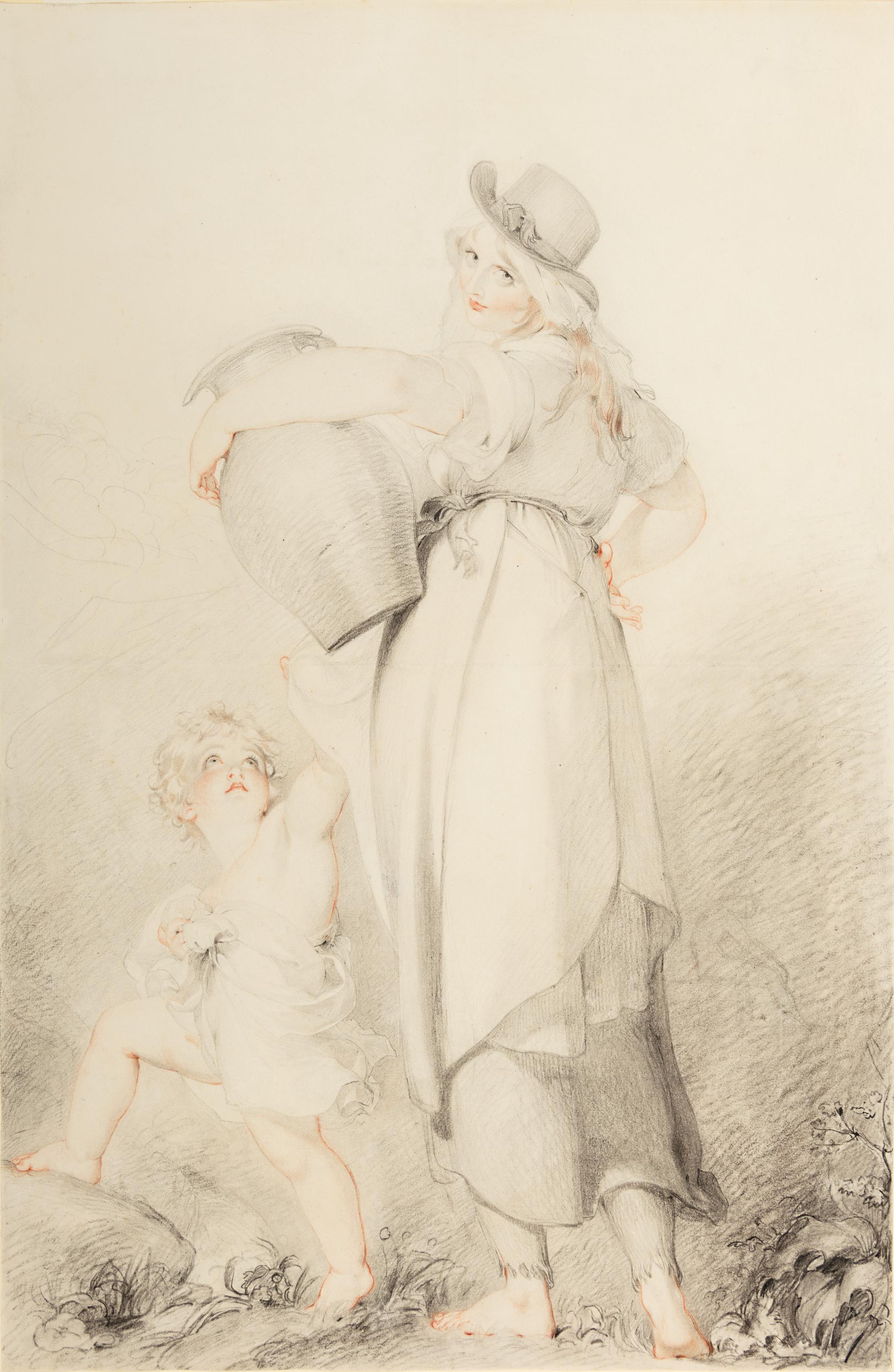The Beautiful Washerwoman
The Beautiful Washerwoman
Sir Thomas Lawrence, P.R.A. (1769-1830)
The Beautiful Washerwoman
Black and red chalk and stump
63.2 by 41.3 cm., 24 ¾ by 16 ¼ in.
Provenance:
Richard Monckton Milnes, 1st Baron Houghton, London and Fryston Hall, Castleford, West Yorkshire;
By descent to his son Robert Crewe-Milnes, 1st Marquess of Crewe (1858-1945);
By descent to his daughter, Mary Innes-Ker, Duchess of Roxburghe, London and West Horsley Place, Surrey, her posthumous sale, London, Sotheby's, 27-28th May 2015, lot 71;
With Daniel Katz, London
Exhibited:
Saltaire, The Royal Yorkshire Jubilee Exhibition, 1887, unnumbered
This drawing is one of the largest recorded by Lawrence and is likely to date from the 1790s. It is also unusual in being a genre subject and can be viewed as a `fancy picture' which were popular at the period. Fancy pictures depicted a scene of everyday life often with a story behind it and an element of sentimentality. They usually include studies of children, beggars, maids, shepherd or street urchins.
Lawrence was the leading portrait painter in oil of his generation, replacing Gainsborough and Reynolds. He started his career in Bath producing small portraits in pastel (see no.43) before moving to London in 1787 where he began to work in oil. He replaced Reynolds as Painter to King George III on the latter's death in 1792 and became a full member of the Royal Academy in 1795. He enjoyed royal patronage throughout his career and was knighted in 1815, becoming President of the Royal Academy in 1820.
He was much admired for the quality of his draughtsmanship during his lifetime and subsequently. His friend Lavinia Banks recalled after his death: `The Taste, the delicacy, the elegance of his drawings was unrivalled and unique, and rendered them deservedly prized and admired' (see The Builder, 6th July 1867, p.483). The critic Cosmo Monkhouse (1840-1901) wrote in the late nineteenth century: `As a draughtsman, especially of faces and hands, he is scarcely equalled by any English artist…. His most perfect works are his drawings in crayon and pencil, which he continued to execute throughout his life' (William Cosmo Monkhouse, The Dictionary of National Biography, 1892-3, vol. XI, pp.725-6).

